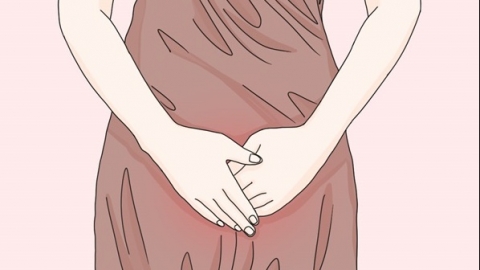What are the white granules on the clitoris, and what should I do about them?
Generally, white particles on the clitoris may be caused by conditions such as ectopic sebaceous glands, inadequate local hygiene, nonspecific vulvitis, fungal vulvitis, or genital warts. It is recommended to seek medical attention promptly, identify the underlying cause, and then improve the condition under a doctor's guidance through general treatment, medication, physical therapy, and other methods. A detailed analysis is as follows:

1. Ectopic Sebaceous Glands: Physiological variation of sebaceous glands in the clitoral area may present as scattered small white particles without symptoms such as itching or pain. No special treatment is required. Maintain cleanliness and dryness of the vulva in daily life, choose loose, breathable cotton underwear, avoid excessive friction, and regularly monitor any changes in the appearance of the particles.
2. Inadequate Local Hygiene: Secretions or residual urine around the clitoris that are not promptly cleaned may accumulate over time and form white particles, which may be accompanied by mild odor. Wash the clitoris and vulva daily with warm water, avoid using irritating cleansers, gently pat dry with a clean towel after washing, change underwear frequently, keep the area dry, and reduce secretion buildup.
3. Nonspecific Vulvitis: Inflammation caused by irritation from menstrual blood or secretions may lead to the appearance of white inflammatory particles on the clitoris, accompanied by local redness, swelling, and mild itching. Patients should apply medications such as erythromycin ointment, mupirocin ointment, or clindamycin gel to the affected area as directed by a physician.
4. Fungal Vulvitis: Infection with Candida may cause white, curd-like particles on the clitoris, accompanied by significant itching and a burning sensation. Patients should apply antifungal medications such as clotrimazole cream, miconazole nitrate cream, or nystatin vaginal ointment as directed by a physician.
5. Genital Warts: Caused by HPV infection, these may appear as cauliflower-like or papillary white particles on the clitoris, accompanied by itching and contact bleeding. Patients should apply medications such as imiquimod cream, podophyllotoxin tincture, or fluorouracil ointment as directed. For larger warts, laser excision may be performed to remove the warts with high temperature. Postoperative care includes keeping the wound clean and avoiding infection.
In daily life, avoid wearing tight synthetic underwear to reduce friction on the vulva, maintain a light diet, avoid spicy and irritating foods, ensure regular sleep patterns, enhance physical immunity, and reduce the risk of local inflammation and infection.




